Tested with a modern APS-C sensor: some "normal" primes, plus one intruder
Following my other articles
- about some legacy lenses,
- and especially a few, cheap wide-angles,
- and some previous testing of nifty-fifty primes,
You're reading the first part that regards centre sharpness, a second page (about corner sharpness) is here.
Most brands feature some "legendary" lenses, at least in the eyes of their respective fans, but since the Internet is with us and third-party tests are around, there is lot more information about everything, including optics, and some myths have faded. Sometimes, also, some underdog reveals unexpected strengths.
Let's see if there is any surprise here...
The camera is the mirrorless Fujifilm XT-20, 24MP, with the X-trans sensor and the Fuji-X bajonet.
The lenses are:
- Yashica ML 50mm f/1.7
- Minolta MD 50mm f/1.4 -currently my favourite
- Minolta MD 50mm f/1.7
- Minolta MD 45mm f/2 -the nice compact thing
- Pentax-A 50mm f/1.4
- Pentax-A 50mm f/1.7 -in my short list, too
- Canon FD 50mm f/1.4
- Canon FD 50mm f/1.8
- Canon FD 24mm f/2.8 -I don't expect this intruder to compare favourably, it is a wide-angle!
- Fujinon 35mm R WR f/2 -a modern contender for the Fuji-X bajonet. Aspherical
Notice the Canon FD 24mm, that I threw in the mix just because it recently came into my possession. I don't expect it to compete against the normal primes, but let's just see what it can do...
Lenses that I left out:
Konica AR 50mm f/1.4. In spite of its high reputation, some first shots I tried with this one were not satisfactory, to my great delusion. The the lens fell and it's now broken. Sigh.
Konica AR 50mm f/1.7. Same af for the f/1.4 applies. Not what I expected.
Ricoh Rikenon 50mm f/1.4. I have already ruled out this one in some previous test, it was inferior to its peers.
Lenses that I'd like to test that I don't possess: any 60mm or 70mm lens (such focals are not common, indeed), some Olympus Zuiko, some Voigtländer. Sooner or later I'll put my hands on a Zuiko, but unlikely I'll ever sell a kidney for a Voigtländer!
I have a weak spot, which is fondness for sharpness. Objectively, there are so many other parameters that describe a lens, and yet sharpness remains my first. Do not forget that as long as the megapixel count of digital sensors increase, the lenses that are less sharp will fare worse and worse, while most other characteristics will not get that worse (distorsions, for instance, will stay the same, no matter the pixel count). So, beware, never underestimate sharpness, especially if you want to pass a lens to your future cameras!
Part I: comparison of center sharpness, considerations
Given the number of items in this test, I start from the easiest part: sharpness at the center of the frame, hence I'm not telling anything about: colour reproduction, aberrations, lateral CA, focus, corner sharpness, spherical aberration, barrel distorsion
NOTICE 1: for this test, I could have used JPEG straight out of the camera. It would have been appropriate since the Fuji cameras do a fantastic job and, believe it or not, most often working from RAW can do just a hair better!
But I decided to go for the reworked RAW files, in batch mode with RawTherapee.
WARNING: this implies that I could sometimes do better, batch is never the best option but the images were so many!
Anyway, I assume that for center performance the output difference between the three options (in-camera JPEG, manual RAW processing and batch RAW processing) is not much.
In some cases I have risen the lightness and/or the contrast in a later moment, with a picture editor, but I have never compensated the exposure with RawTherapee (indeed, that would have been better but an unfair treatment for some crops only).
NOTICE 2: I am not super-careful when doing my tests, so there is always something that makes them imperfect, please also read other tests on the web, there are plenty. The more you read, the more you know.
NOTICE 3: I want to stress this again: center performance conveys just a small part of the picture; there are lenses that are fantastic at the center and abysmal as for corners, beware!
At least I have taken other shots with most of these lenses, so I also have a general idea of what to expect from them; almost always the target tests confirm the general impressions.
All of then glasses do fine here, there are differences at the widest apertures but there is a fast alignment in terms of performance.
This is to be expected at the center of the frame, but in the second part of the test, corners may tell a different story.
Some of the lenses in this test resolve more than the sensor can take in the center, so if it were just for this parameter and if price was not an issue at all, the Fujinon would probably be the lens to go, since it is on par with the peers and it also provides auto-focus.
But since I'm looking for a portrait lens, 50mm is a much better suited length on APS-C (75mm equivalent), so it's like comparing apples to oranges.
Looking at the fifties, then, I'd pick ...
The choice here is not obvious nor easy, so I'd better say which one I'd discard: the Minolta 50mm/1.7, the Pentax-A f/1.4 and the Canon 50mm f/1.8. It is curious that where the Pentax-A the slower lens, the f/1.7, bests its f/1.4 counterpart, in the case of CanonFD and Minolta MD the f/1.4 versions clearly do better than, respectively, the f/1.8 and f/1.7 of the same lines.
Back to the Fuji-X, if you take the price into account you can't compare it to the legacy lenses, since they can be purchased for a very small price.
By aperture
At f/1.4, the best performers are the Minolta MD f/1.4 and the Canon FD 50mm f/1.4. The different exposition (I did better with the Canon) give a better look to the Canon crop and it may fool you, the real results are on par. Indeed, before this test the Minolta MD 50mm/1.4 was my favourite lens and it confirms its great qualities here.
There is an odd magenta cast in the Canon crop, though, and it appears again in the next batch (f1.7/1.8/2). I'll enquiry a smart friend of mine about this.
The Pentax-A 50/1.4 lags behind, this I knew already.
At f/1.7 and f/1.8 and f/2 I am doing two very stupid things: first, I'm not always sure about the actual aperture: for the wider lenses this is a half-stop but how much half, exactly? Secondly, there may be a huge difference between f/1.7 and f/2, so putting together the three apertures is not a smart move!
Anyway, I give for granted that you'll take this with a grain of salt.
The Fujinon does very well here, possibly comes out as the best of all, but again, it is f/2.
The Canon FD 50mm/1.4 is very good, but the strong magenta cast is still there and makes me wonder about colours.
Other lenses that make a good show here: the Minolta MD 45mm f/2, the Minolta MD 50mm f/1.4 and the Pentax-A 50mm f/1.7; also the Pentax-A f/1.4 is not bad
The remaining do worse.
At f/2.8, one of my favourite apertures for a number of reasons, I see every item performing well. Sharpness at the center becomes a non-issue, though some lenses produce better micro-contrast. Alas, I wasn't smart enough to apply the same procedure with all the shots and images, so some lenses have been treated better than others. In particular, I did not always overexpose or not always enough, and this may give false impressions. Later intervention to raise the luminosity of the crops cannot give the same result of proper overexposure at shooting time.
Let me just point out that the Fujinon 35mm does very well and that the Canon 24mm is a pleasant surprise here!
And also the Yashica 50/1.7 is good. Did I underestimate this lens? We'll see...
Only the Minolta 50mm/1.7 looks softer and, in a minor way, the Pentax-A 50/1.4.
At f/4, there is not much to say. Only the Minolta MD 50/1.7 is sub-par. I'm definitely going to sell this one!
At f/5.6, unsurprisingly, the glasses give their best. It would be hard to crown any, and even to discard one!
You can see for yourself that at f/8 some lenses start to suffer from diffraction and sharpness start to drop (apparently, Canon FD 50mm/1.4, the Minolta MD 45mm/2, the Pentax-A 50mm/1.4 and the Yashica ML 50mm/1.7 are affected), while other are still good.
I have used a tripod but shot with the hand, so I cannot rule out the possibility of some shaking.
Sparse observations and conclusion
As for center performance, there are some surprises, indeed.
I did not expect the Canon f/1.8 to be that bad and, at some apertures, I see that the Yashica ML 50/1.7 is not terrible as I thought, though the pictures I took outside some time ago are rather dull; I'd say this lens has not much of a character. The Minolta MD 50/1.7 is probably the worst of the bunch.
I have a sort of veneration for the Minolta MD f/1.4 (check my other tests to see why) but in the center it is not or not always the absolute best.
The Fujinon, though helped a bit by the camera operations, for center sharpness looks generally the best option. It is to be expected from a modern lens.
The Canon FD f/1.4 and the Minolta MD 50/1.4 are very good, and the Canon FD 24mm f/2.8 is a pleasant surprise, very unexpected.
No.1: Fujinon 35mm/2, but it's not a portrait lens, so better to stick with the second row...:
No.2: Canon FD f/1.4, Minolta MD 50/1.4
For the rest, see the observations.
The crops
The images contain unresized crops from the photos, taken at one corner.
All manual lenses has been tested twice for each aperture (refocusing each time).
So, for each aperture, I picked the best crop for the centre (in this page) and the best one of the four corners as well (read part two).
|
aperture: f/1.4 Just a few lenses here sport f/1.4. This is not a very usable aperture, but most often these items behave much better at f/1.7-f/1.8/2 than counterparts that start at the classic f/1.7-1.8. But sometimes it is the opposite: to provide f/1.4, other compromises are accepted in the lens design so that it is subpar compared to its siblings. In such case, I think it's a waste of money, since you're going to close at least one stop almost all of the times |
||
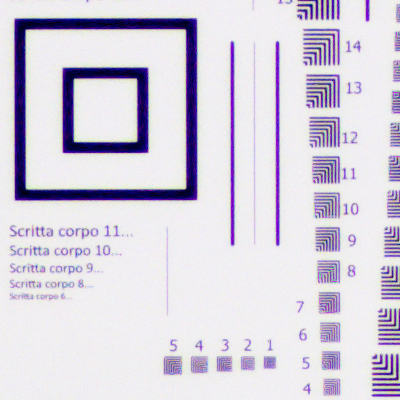 Canon 50mm/1.4 at f/1.4, center |
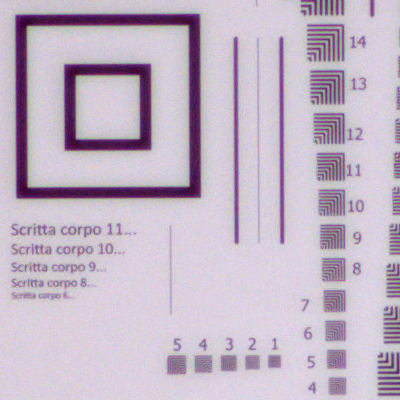 Minolta 50mm/1.4 at f/1.4, center |
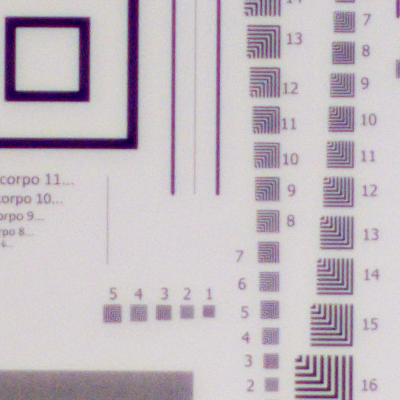 Pentax-A 50mm/1.4 at f/1.4, center |
| aperture: f/1.7-1.8-2 | ||
| For convenience, I am put together these three apertures, but beware, f/2 can be much better than the other two, so the comparison may be unfair |
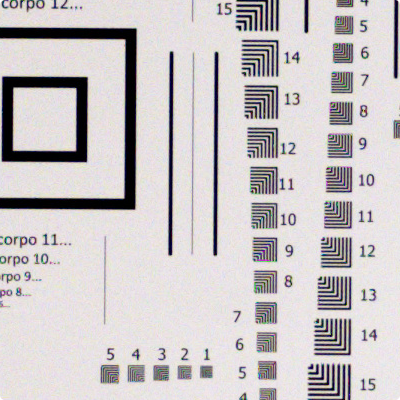 Fuji-X 35mm/2 at f/2, center |
|
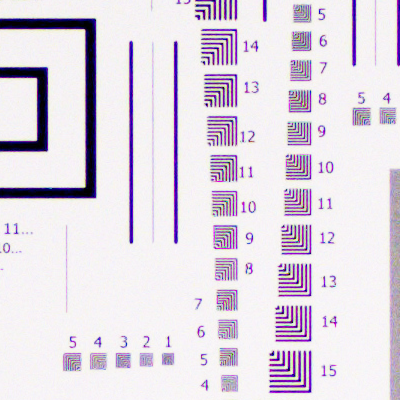 Canon 50mm/1.4 at f/2, center |
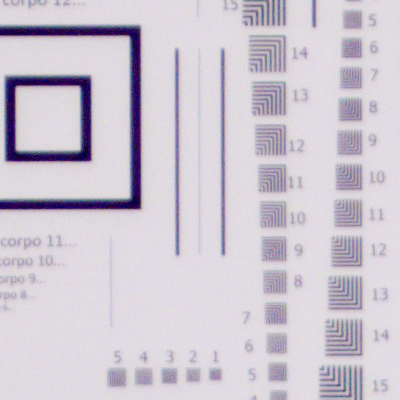 Canon 50mm/1.8 at f/1.8, center |
nada! |
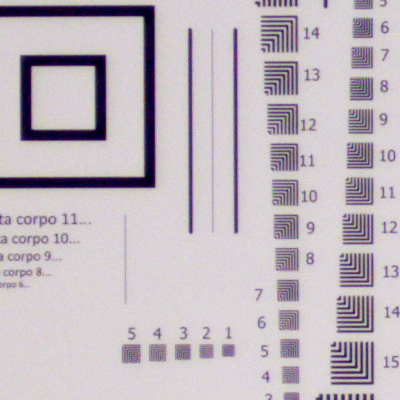 Minolta 45mm/2 at f/2, center |
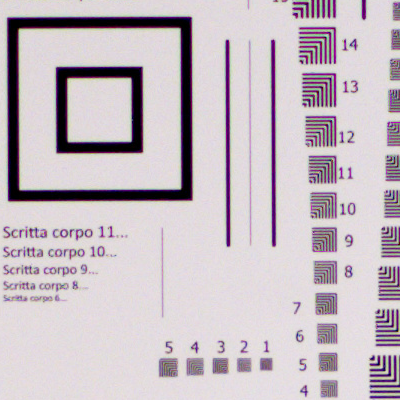 Minolta 50mm/1.4 at f/2, center |
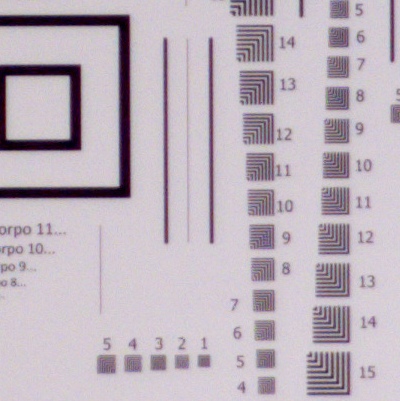 Minolta 50mm/1.7 at f/1.7, center |
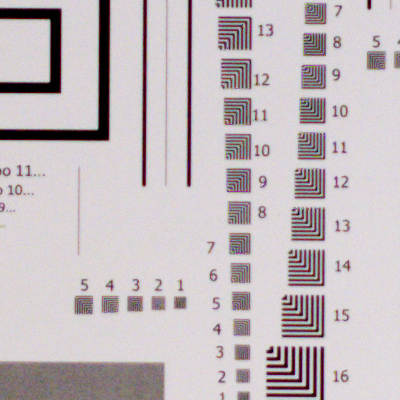 Pentax-A 50/1.4 af f/2, center |
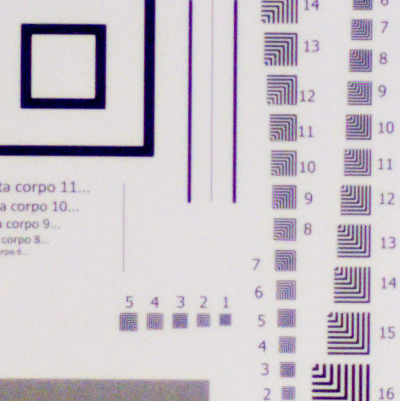 Pentax-A 50/1.7 af f/1.7, center |
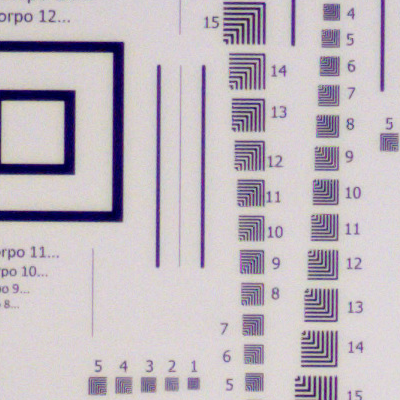 Yashica 50/1.7 af f/1.7, center |
| aperture: f/2.8 | ||
| with my Fuji-X XT20, f/2.8 is a sort of magic aperture: good lenses behave well here, and f/2.8 allows me to shoot in theaters with low light most of the times. Close the blades, and the time becomes too long and the actors' bodies will show movement trails; open the blades, and the depth of field becomes too shallow, plus the sharpness suffers too much |
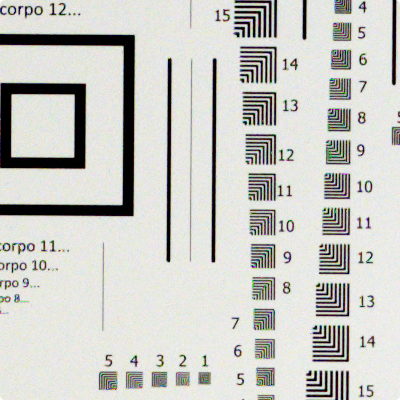 Fuji-X 35mm/2 at f/2.8, center |
|
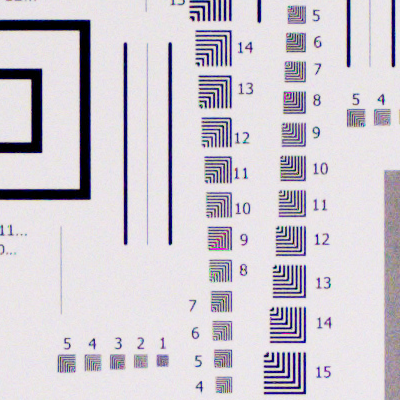 Canon 50mm/1.4 at f/2.8, center |
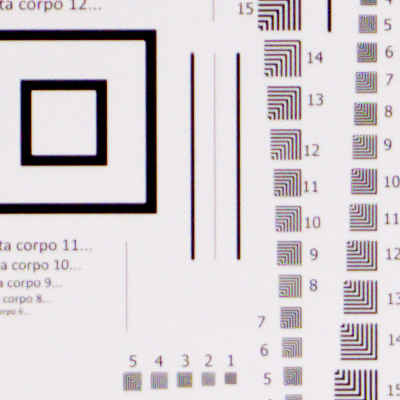 Canon 50mm/1.8 at f/2.8, center |
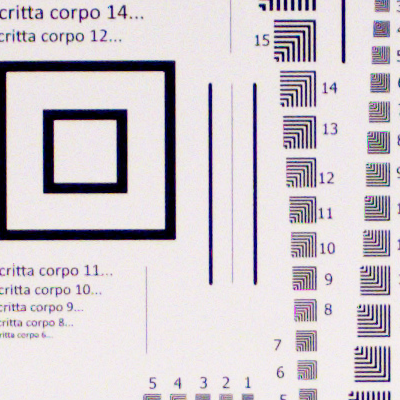 Canon 24mm/2.8 at f/2.8, center |
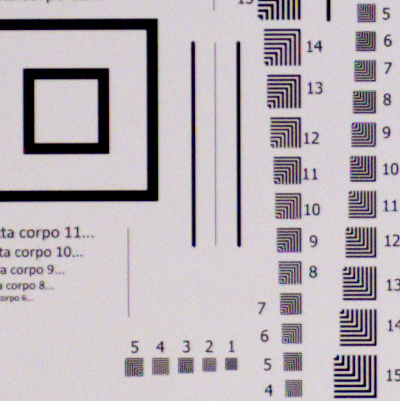 Minolta 45mm/2 at f/2.8, center |
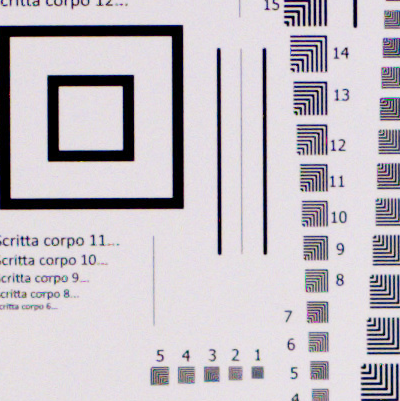 Minolta 50mm/1.4 at f/2.8, center |
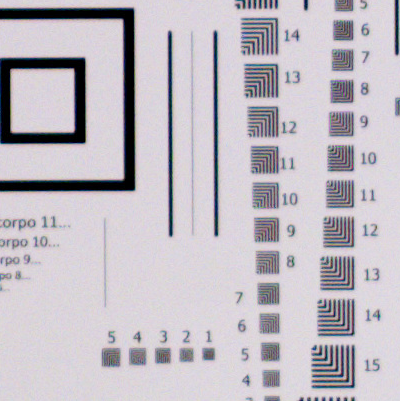 Minolta 50mm/1.7 at f/2.8, center |
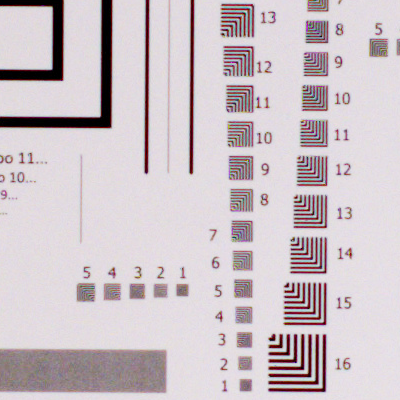 Pentax-A 50/1.4 af f/2.8, center |
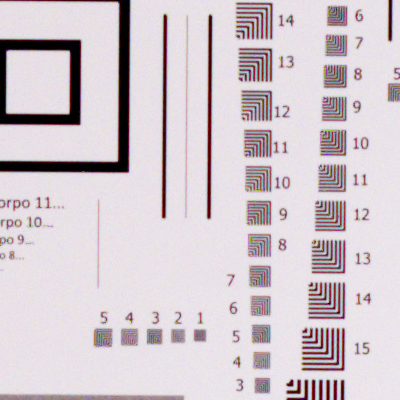 Pentax-A 50/1.7 af f/2.8, center |
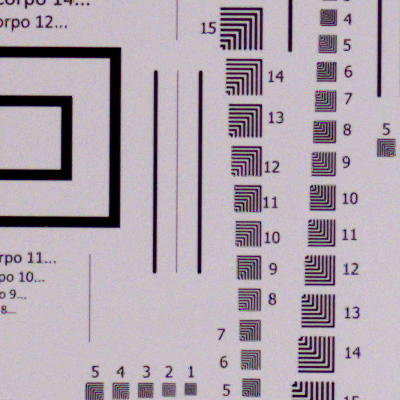 Yashica 50/1.7 af f/2.8, center |
| aperture: f/4 | ||
| especially with modern lenses, you may want to check at f/4 for the best sharpness, sometimes, you don't need f/4 |
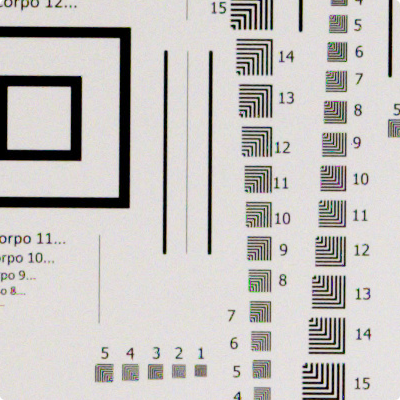 Fuji-X 35mm/2 at f/4, center |
|
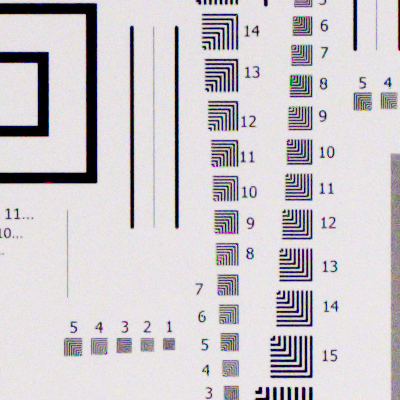 Canon 50mm/1.4 at f/4, center |
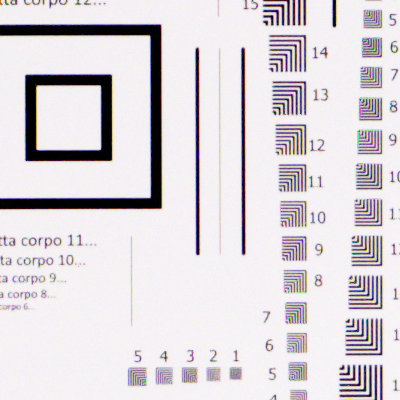 Canon 50mm/1.8 at f/4, center |
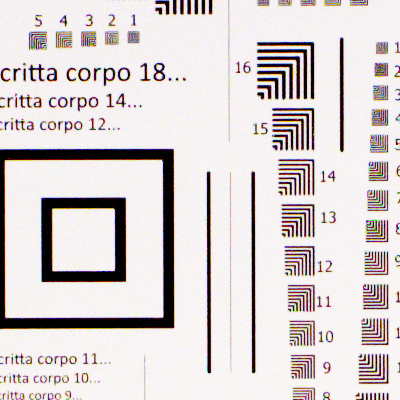 Canon 24mm/2.8 at f/4, center |
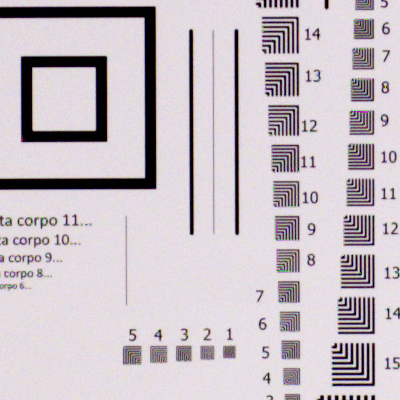 Minolta MD 45mm/2 f/4, center |
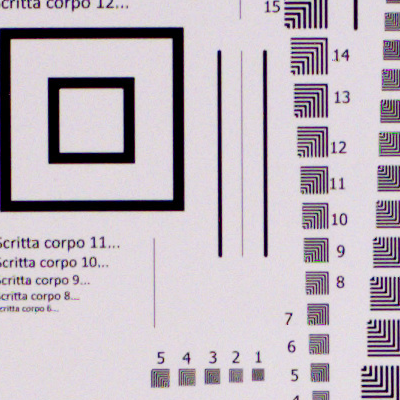 Minolta MD 50mm/1.4 f/4, center |
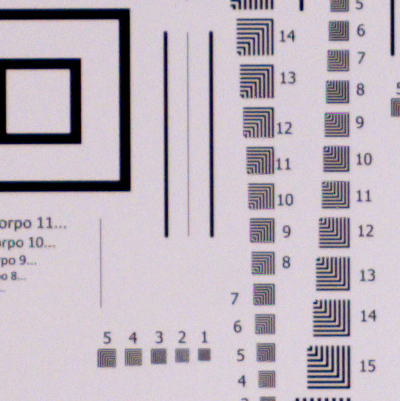 Minolta MD 50mm/1.7 f/4, center |
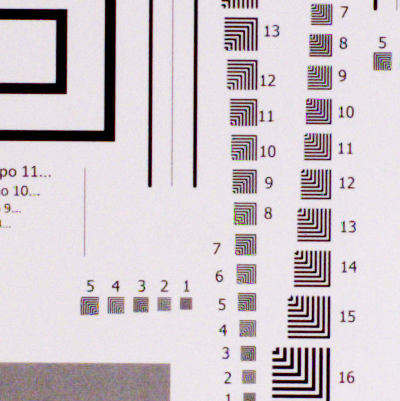 Pentax-A 50mm/1.4 at f/4, center |
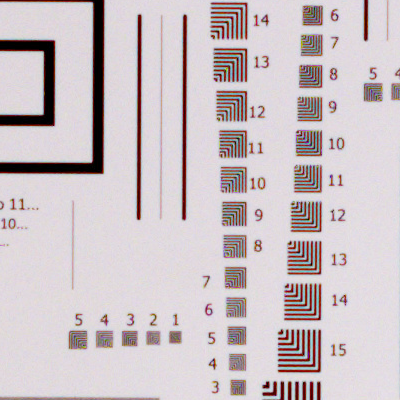 Pentax-A 50mm/1.7 at f/4, center |
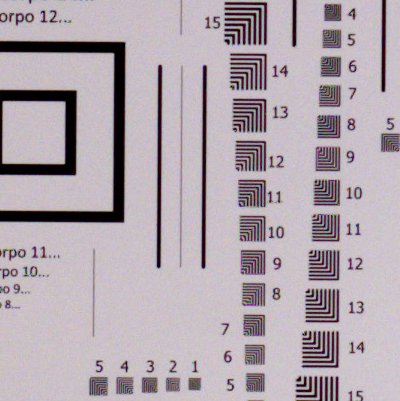 Yashica ML 50mm/1.7 at f/4, center |
| aperture: f/5.6 | ||
| most lenses perform the best between f/5.6 and f/8, though some modern ones deliver the best already at f/4 |
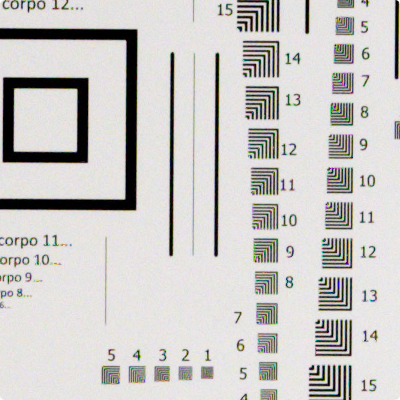 Fuji-X 35mm/2 at f/5.6, center |
|
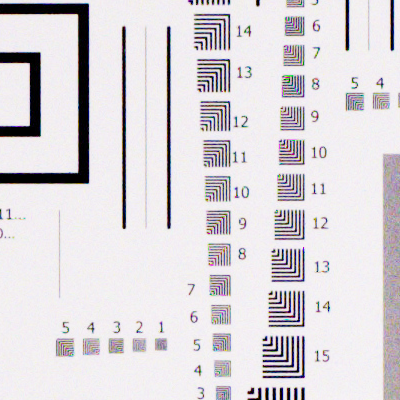 Canon FD 50mm/1.4 at f/5.6, center |
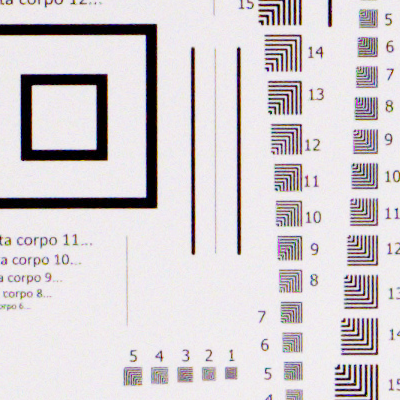 Canon FD 50mm/1.8 at f/5.6, center |
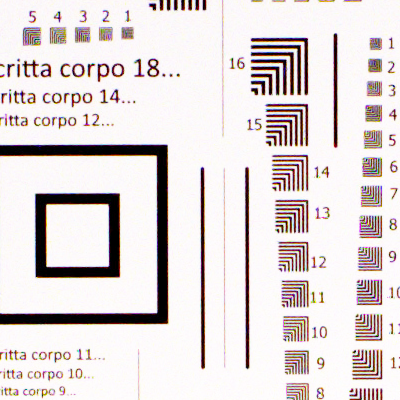 Canon FD 24mm/2.8 at f/5.6, center |
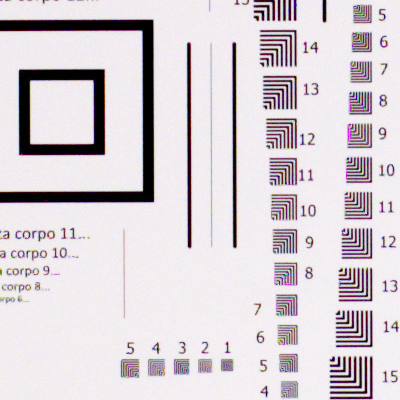 Minolta MD 45mm/2 at f/5.6, center |
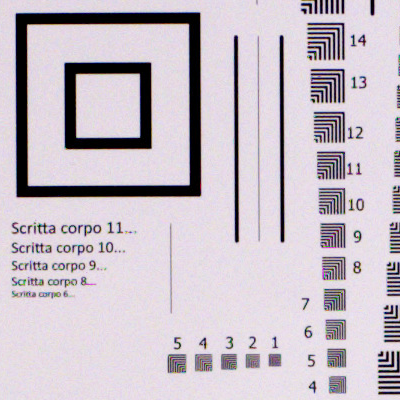 Minolta MD 50mm/1.4 at f/5.6, center |
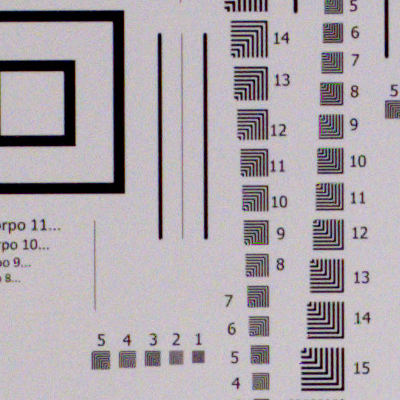 Minolta MD 50mm/1.7 at f/5.6, center |
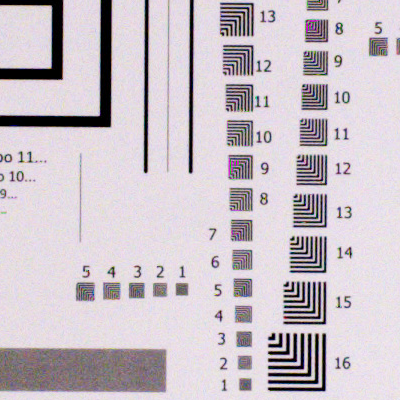 Pentax-A 50mm/1.4 at f/5.6, center |
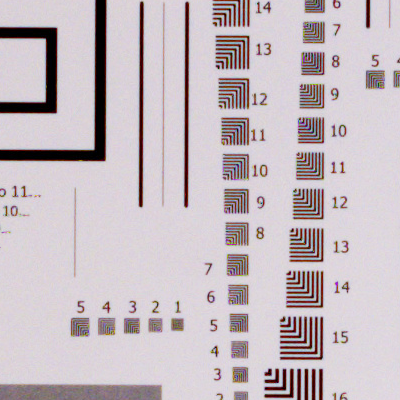 Pentax-A 50mm/1.7 at f/5.6, center |
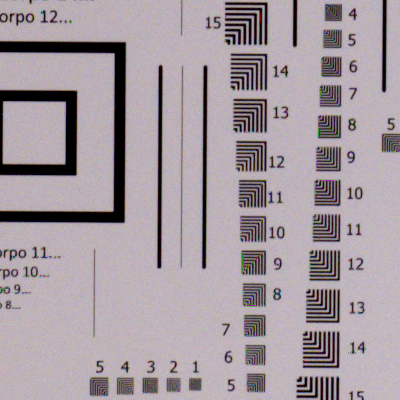 Yashica ML 50mm/1.7 at f/5.6, center |
| aperture: f/8 | ||
| you can't go wrong at f/8, right? Wrong... With some lenses, diffraction may kick in |
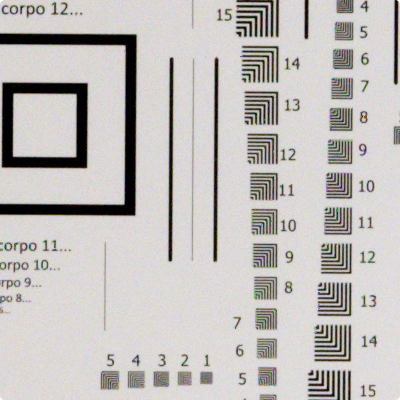 Fuji-X 35mm/2 at f/8, center |
|
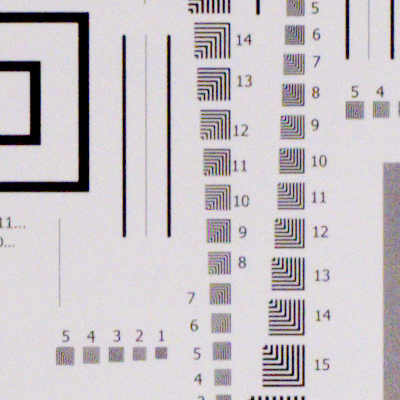 Canon FD 50mm/1.4 at f/8, center |
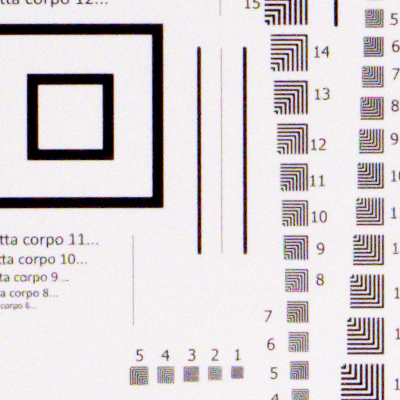 Canon FD 50mm/1.8 at f/8, center |
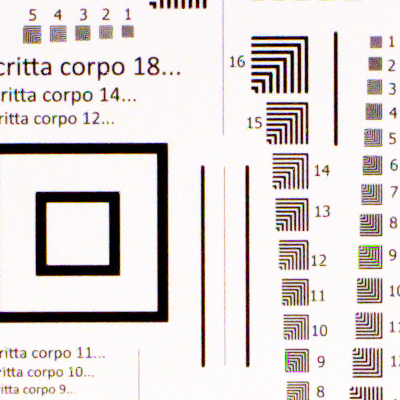 Canon FD 24mm/2.8 at f/8, center |
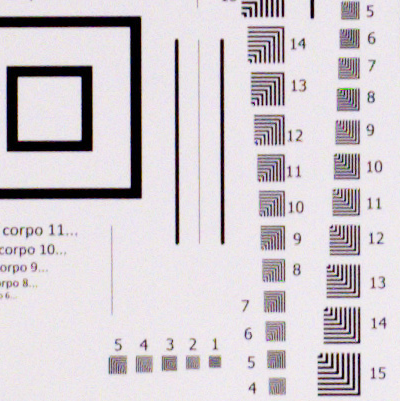 Minolta MD 45mm/2 at f/8, center |
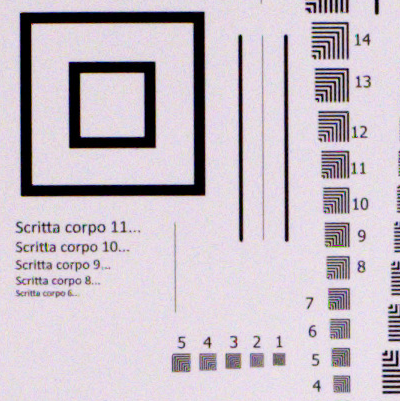 Minolta MD 50mm/1.4 at f/8, center |
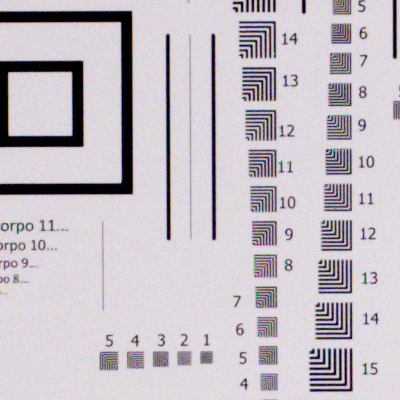 Minolta MD 50mm/1.7 at f/8, center |
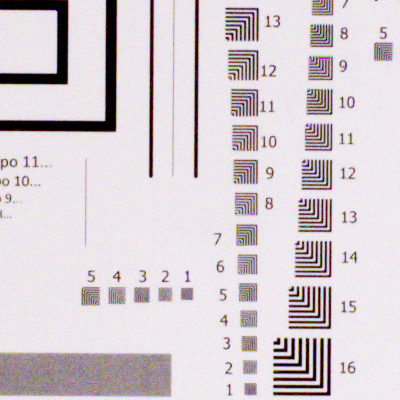 Pentax-A 50mm/1.4 at f/8, center |
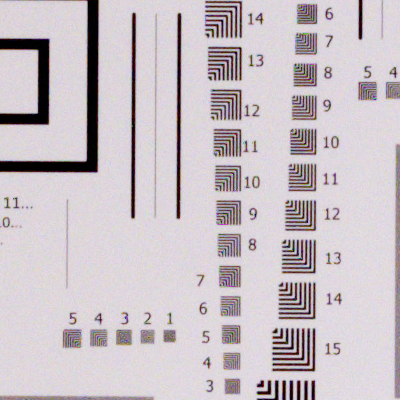 Pentax-A 50mm/1.7 at f/8, center |
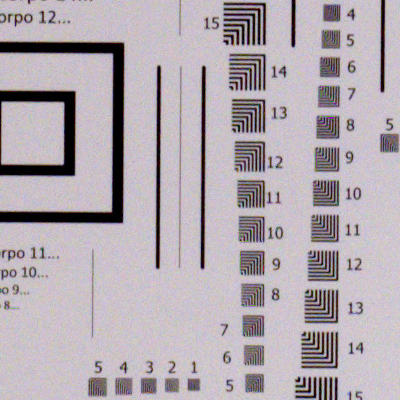 Yashica ML 50mm/1.7 at f/8, center |
An extra piece of cake
I've taken a moment to work on two images, one from the Canon FD 1.4 and one from a Zeiss Distagon 28 f/2.8, with the excellent open source tool RawTherapee. I'm not very good with RAF files (the RAW files from Fuji-X cameras) and as I said a number of times, the Fuji in-camera processor is amazing, so at times I obtain better results than the camera JPEG, other times I don't.
What do I see? First, though the images show some difference, the sharpness of the Canon crop worked with RawTherapee is more or less the same than then one from the camera. Second, well... I think the Distagon needs no presentation, and indeed it has the edge here, but the Canon is not that far away (well, this is the center, what did you expect? It is in the corners that you see what is what!).
Some more noise is to be expected in the Zeiss image: the exposure has been risen by a smaller amount and the shot was taken at a higher ISO, to compensate for the lack of a tripod.
I'm not comparing the lenses here, I rather wanted to show what is probably the best or almost the best you can squeeze out from the sensor.
I also threw in the mix some JPEG files from the camera, that may help prove the point.
Here are the crops, all the pictures were taken at f/2.8. The Distagon came in after the test of this web page, so I just took a quick shot by hand, without a tripod.
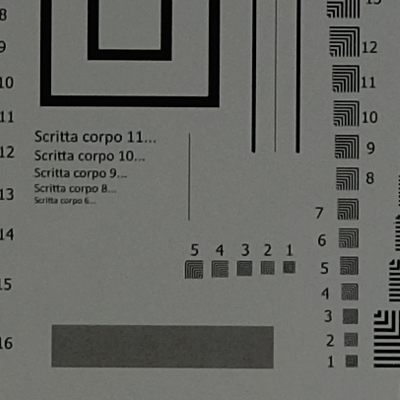 center of the image, shot at f/2.8 with Fujifilm 35mm/2 JPEG from the camera |
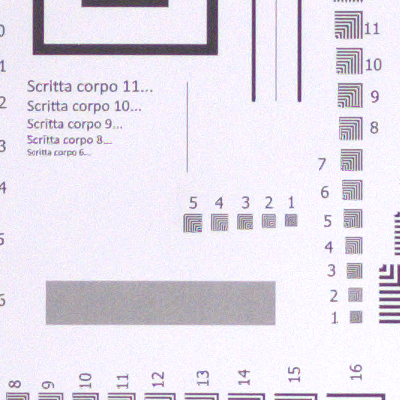 center of the image, shot at f/2.8 with Zeiss Distagon T* (for Contax/Yashica) 28mm/2.8 manual edit with RawTherapee |
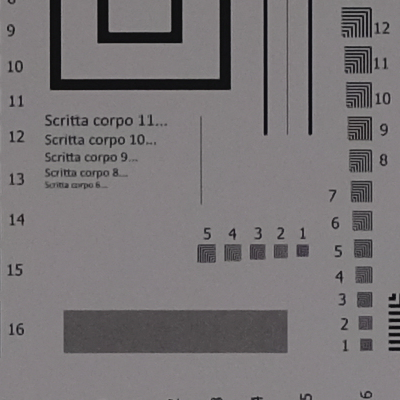 center of the image, shot at f/2.8 with Canon FD 50mm/1.4 JPEG from the camera |
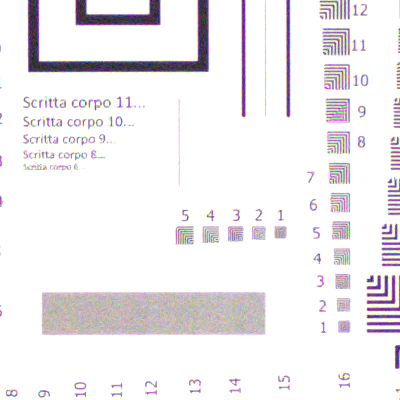 center of the image, shot at f/2.8with Canon FD 50mm/1.4 manual edit with RawTherapee |
| Back to the site index | ||
| Do you love Italy? Check my little site, I hope to find the time to make it grow! | ||